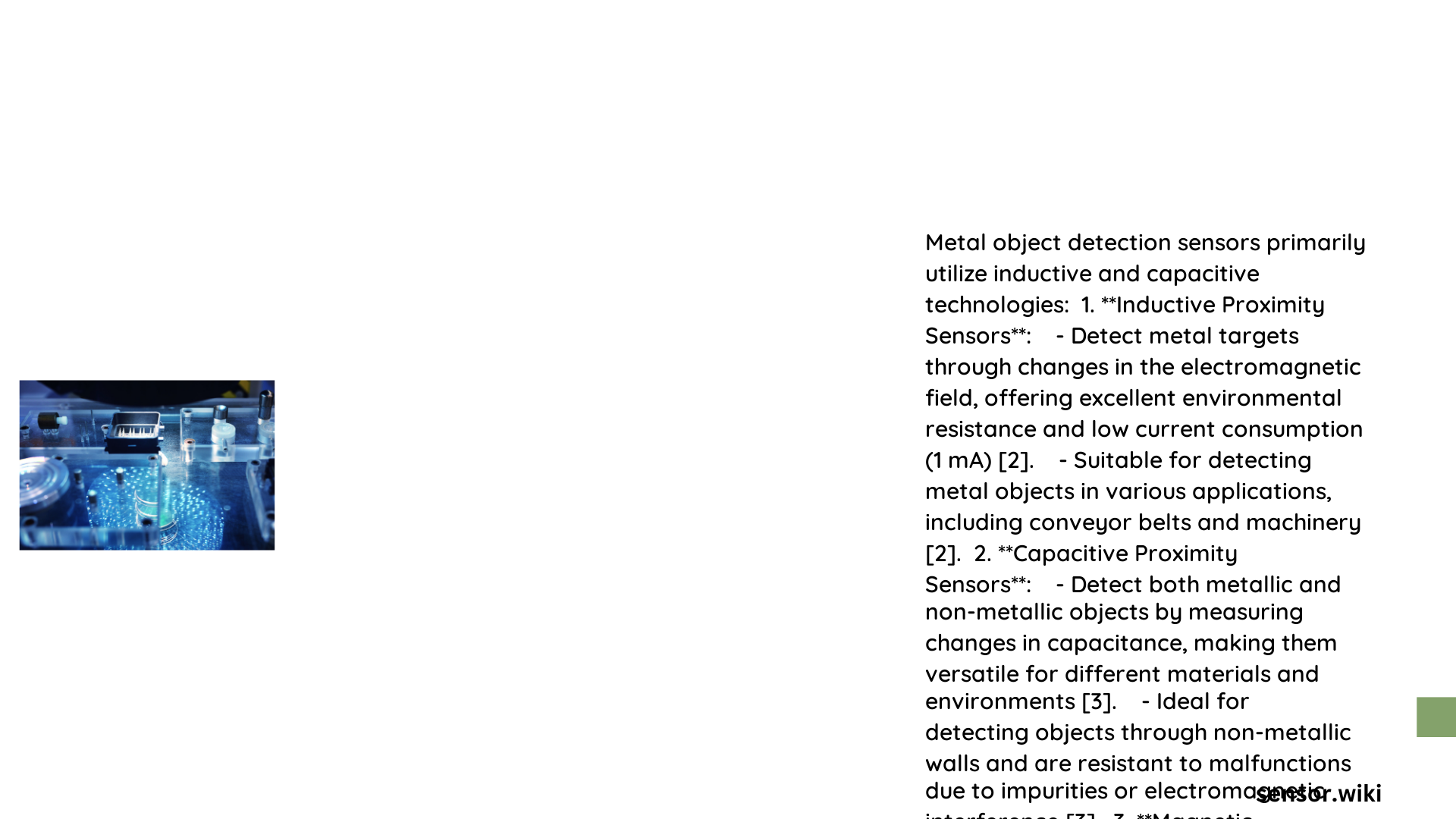Metal object detection sensors represent sophisticated technological solutions designed to identify and locate metallic objects across diverse environments. These advanced systems utilize complex electromagnetic principles, frequency modulation, and signal processing techniques to achieve precise metal identification and localization. Modern metal object detection sensors integrate multiple technologies like VFLEX, Broad Band Spectrum (BBS), and Three Frequency (3F) to enhance detection accuracy, sensitivity, and depth across various challenging terrains and conditions.
What Are Metal Object Detection Sensors?
Metal object detection sensors are specialized electronic devices engineered to identify and locate metallic objects using electromagnetic field interactions. These sensors operate by generating electromagnetic waves and analyzing their reflections to determine the presence, composition, and characteristics of metal targets.
Key Technologies in Metal Object Detection
VFLEX Technology Capabilities
- Digital Signal Generation: Creates perfect sine wave transmissions
- Enhanced Signal Amplification: In-coil signal booster reduces interference
- Adaptive Frequency Configuration: Dynamically adjusts to specific detection requirements
Broad Band Spectrum (BBS) Technology Features
- Frequency Range: 1.5 kHz – 100 kHz
- Ground Compensation: Automatic mineralization adjustment
- Multi-Frequency Analysis: Comprehensive target identification
How Do Different Metal Detection Technologies Perform?

Performance Comparison Table
| Technology | Frequency Range | Sensitivity | Detection Depth |
|---|---|---|---|
| VFLEX | Adaptive | High | Increased |
| BBS | 1.5-100 kHz | Very High | Substantial |
| Three Frequency | 6.4, 20, 60 kHz | Optimized | Variable |
What Challenges Impact Metal Object Detection?
Environmental Interference Mitigation
Metal object detection sensors face several critical challenges:
- Ground Mineralization
- Automatic ground balance technologies
- Advanced signal processing algorithms
-
Continuous signal compensation
-
Electromagnetic Noise
- Frequency shift capabilities
- Adaptive filtering techniques
- Robust signal discrimination
What Are Advanced Detection Strategies?
Sensor Configuration Approaches
Successful metal object detection requires:
– Precise frequency selection
– Dynamic signal processing
– Continuous environmental adaptation
– Advanced noise reduction techniques
Cost and Package Considerations
Sensor Investment Options
Different metal object detection sensor packages range from:
– Entry-level: $300-$500
– Professional: $1,000-$2,000
– Advanced Research: $2,000-$5,000
Emerging Trends in Metal Detection Technology
Future Development Directions
- Artificial intelligence integration
- Enhanced machine learning algorithms
- Miniaturization of sensor components
- Improved wireless communication capabilities
Practical Applications
Metal object detection sensors find applications in:
– Archaeological research
– Security screening
– Industrial quality control
– Geological exploration
– Military and defense systems
Technical Recommendations
Sensor Selection Criteria
- Evaluate environmental conditions
- Consider detection depth requirements
- Assess target material characteristics
- Review signal processing capabilities
Conclusion
Metal object detection sensors represent a sophisticated intersection of electromagnetic engineering, signal processing, and adaptive technologies. Continuous technological advancements promise increasingly precise, efficient, and versatile detection capabilities across multiple domains.
